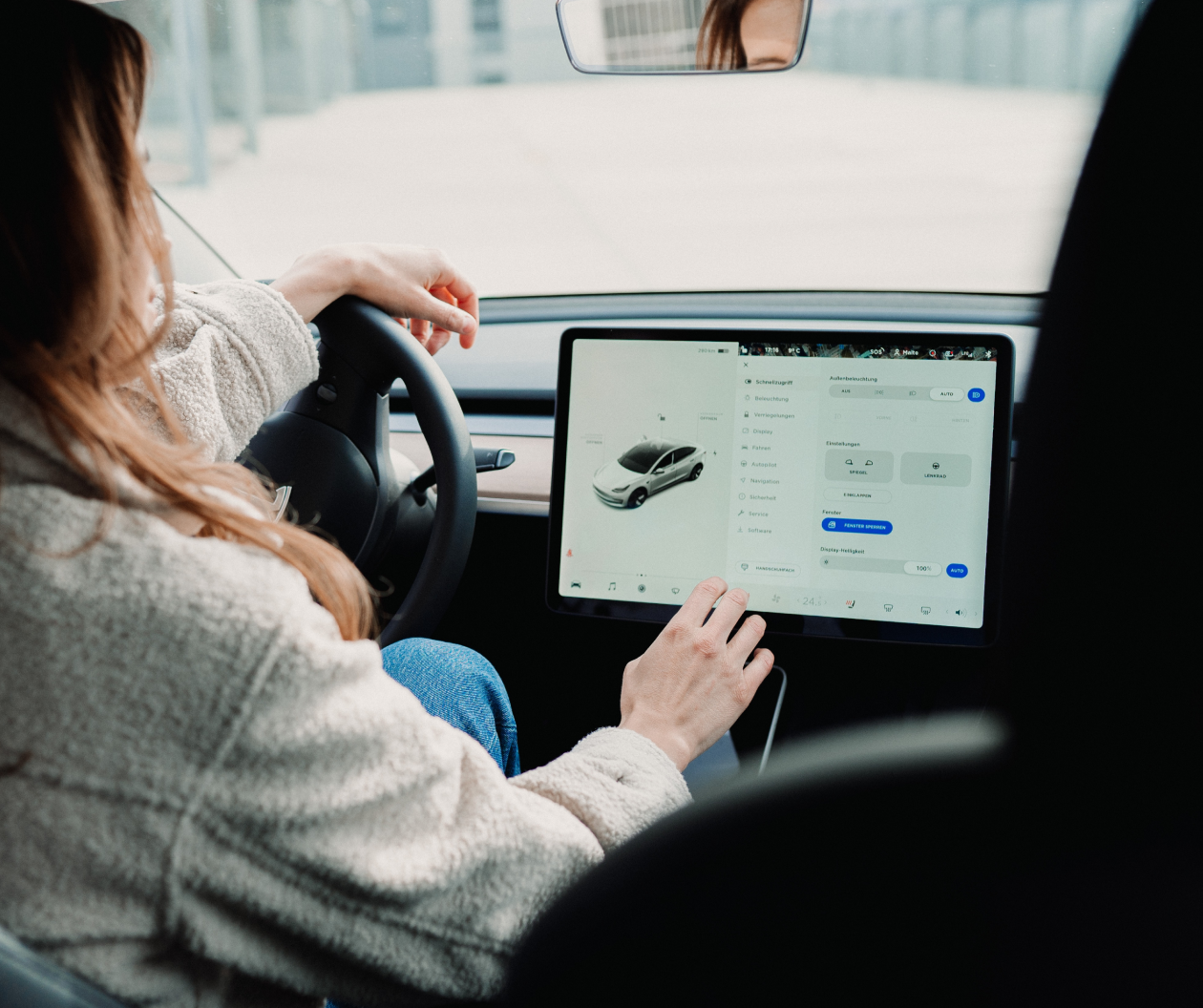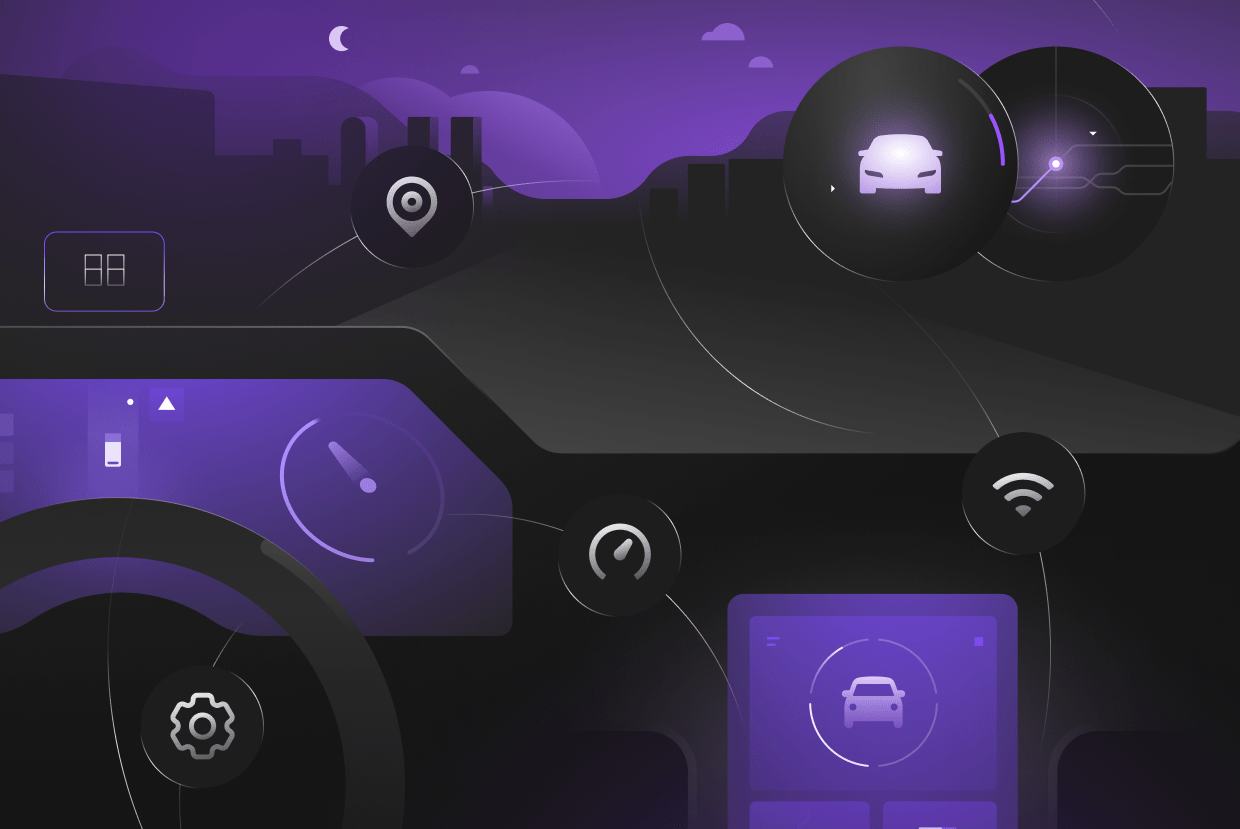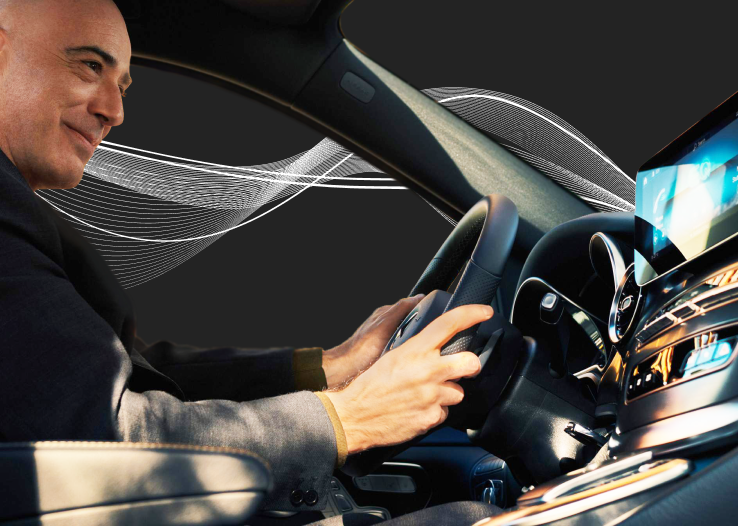Automotive infotainment systems are redefining the way we interact with our cars. Once limited to simple AM/FM radios, today’s automotive infotainment technologies integrate navigation, entertainment, connectivity and voice assistance into a single digital ecosystem.
This evolution mirrors the wider trend of vehicles becoming software-defined and connected by design. Infotainment isn’t just about convenience, it’s about shaping brand identity, user experience and emotional engagement.
Modern consumers now expect their cars to deliver the same fluid digital experiences as their smartphones, so much so that 60% of consumers say that infotainment systems play a critical role in their decisions on which cars they want to buy or lease.
As a result, OEMs and suppliers are racing to create in-vehicle infotainment platforms that merge innovation, safety, and personalization seamlessly.
Fast-forward to today: infotainment systems have evolved into digital cockpits, merging multiple screens, sensors and voice assistants into one unified interface. This shift reflects how automotive infotainment systems have become central to both driving experience and brand differentiation.
The automotive infotainment market
Infotainment has evolved into a strategic differentiator. For OEMs, the in-car experience now defines how customers perceive brand equity.
At a time where electrification and autonomy are becoming standard, automotive infotainment solutions offer a vital competitive edge. Drivers increasingly prioritize digital UX, software reliability, personalization and connected services when choosing their next car.
This shift is pushing automakers to adopt software-driven strategies, invest in cloud connectivity, and collaborate with digital partners like Star, who bridge the gap between automotive engineering and user-centered design.
The automotive infotainment market is expanding rapidly and becoming central to the future of mobility. Industry reports show strong growth for infotainment systems globally. For example, the market was valued at almost $15 million in 2023 and is projected to reach $29 million by 2030 according to Grand View Research.

These figures highlight that infotainment is now a major vehicle subsystem, not simply a ‘nice-to-have’. Key market drivers of this include: rising consumer expectations for connectivity and seamless experiences, proliferation of smart, electric vehicles and the shift to software-defined vehicle architectures.
Ultimately, infotainment now influences more than just purchase decisions. It encompasses lifecycle engagement, brand loyalty and aftermarket services.
Key components of modern in-vehicle infotainment
Modern in-vehicle infotainment (IVI) platforms integrate complex technologies designed to enhance safety, convenience and engagement. Core components include:
- Human-machine interfaces (HMIs): Intuitive touchscreens, voice assistants and physical controls that reduce distraction
- Operating systems and middleware: Platforms such as Android Automotive OS or QNX provide the backbone for infotainment applications and third-party integrations
- Connectivity modules: 5G/6G, Wi-Fi and Bluetooth connections provide real-time updates and cloud-based services
- Cloud and edge computing: Over-the-air updates (OTA), predictive maintenance and personalized content delivery
- AI and machine learning: Power adaptive user experiences that learn driver preferences and behaviors over time
Together, these elements create a connected, adaptive ecosystem that transforms vehicles into digital companions. But delivering best-in-class infotainment experiences comes with complexity. OEMs need to balance innovation with usability, safety, and cost:
- UX Complexity: Simplifying the interface without sacrificing depth or capability
- Safety compliance: Meeting global standards for driver attention and ergonomics
- Integration costs: Connecting infotainment with ADAS, cloud systems and vehicle electronics demands scalable architectures
- Cybersecurity threats: Protecting vehicle data and systems against evolving digital risks
Partnering with experienced mobility and UX experts can help OEMs overcome these hurdles while staying ahead of consumer expectations.
Features defining the car infotainment experience
As cars evolve into rolling digital cockpits, drivers expect infotainment systems to deliver convenience, comfort and emotional connection on par with their mobile devices.
The bottom line: consumers want infotainment that feels human, integrating effortlessly into their lifestyles while prioritizing safety, simplicity and delight. Here’s what matters most to them most.
1. Seamless connectivity and integration
Drivers expect frictionless connection between their vehicles and digital lives. Whether through Apple CarPlay or Android Auto (or embedded app ecosystems), connectivity should be instant and reliable.
Integration goes beyond phone mirroring too. It extends to wearables, smart home devices and cloud accounts. For example, a driver might want to start their car from a smartwatch. Or have navigation routes sync automatically with their calendars or play playlists curated by their streaming platform of choice.
2. Voice control and conversational AI
Voice assistants have moved from novelty to necessity — a massive 91% of drivers want to use in-car voice assistants. Natural language processing enables drivers to control navigation, media and calls without taking their hands off the wheel or eyes off the road.
Cutting-edge infotainment systems are also evolving toward context-aware voice AI, capable of understanding intent, mood and location. Think of an in-car assistant that knows when to offer route updates during heavy traffic or suggest a coffee stop when fatigue is detected.
3. Touchscreen interfaces with haptic feedback
Large, high-resolution touchscreens remain central to the in-vehicle infotainment experience, especially as digital cockpits expand to include passenger displays. Having said that, consumers still value tactile control — physical knobs or buttons for essential functions like temperature or volume. So much so that Volkswagen is reintroducing physical buttons due to customer feedback.
Note: From 2026, cars will need physical buttons alongside touchscreens in order to achieve the highest Euro NCAP safety rating, according to ETSC.
The future is haptic feedback and gesture control, creating a multi-sensory interface that blends physical and digital interaction seamlessly.
4. Personalization and emotional connection
Personalization transforms a car from a machine into a companion. AI-powered infotainment systems now adapt everything from lighting to music and navigation preferences based on driver profiles.
Leading OEMs are using emotion recognition, driver monitoring and biometric inputs (like heartbeat and facial expressions) to deliver responsive experiences. Imagine entering your car after a stressful day and having the system dim the lighting, queue your relaxation playlist and activate massage seats all automatically.
There’s long-term business benefits too, as over half of consumers (56%) say personalized experiences increase brand loyalty.
5. Intuitive UX and experience design
No matter how advanced the technology, UX remains the differentiator. Brand equity is on the decline, as consumers increasingly choose their cars based on features — especially amongst Gen Z.
Consumers expect infotainment systems that are visually appealing, logically organized and responsive across touch, voice and gesture inputs.
Designing for infotainment requires balancing simplicity with depth. Features should reveal themselves contextually, with multimodal input reducing friction across driver states (e.g., focus, fatigue, multitasking.
6. Over-the-air convenience
Smartphones update at the touch of a button, so why shouldn’t cars. Over-the-air software updates allow infotainment systems to evolve post-purchase, adding features, improving UX and fixing bugs remotely.
This not only extends the vehicle’s lifecycle but also reinforces the sense that their car is alive and learning.
7. Wellness, safety, accessibility
An emerging demand centers on well-being and inclusivity. Drivers value features that reduce stress and enhance safety — from fatigue detection to guided breathing exercises during traffic. Accessibility options, such as voice narration or adjustable interfaces for users with limited mobility or vision, are also gaining prominence.
What are the automotive infotainment trends for 2026?
The future of automotive infotainment systems is AI, connectivity and human-centered design. As vehicles become software-defined and connected to smart ecosystems, infotainment will serve as the primary interface between the car, the driver and the wider digital world. But these trends show that automotive infotainment isn’t just UI-centric but experience-led too.
In short, it’s about creating meaningful, adaptive and responsible experiences.
The most successful automotive brands of the next decade will be those that master this delicate balance. Here’s the trends defining 2026 and the years ahead.
1. AI-driven personalization
AI is enabling infotainment systems to anticipate user needs in real time. By combining contextual data like driving behavior, calendar events and environmental conditions, AI can personalize the in-car experience dynamically. For example, the system might suggest alternate routes when it detects a meeting scheduled across town and adjusts cabin temperature based on user preference.
Predictive UX will soon become standard too. It allows infotainment to “think ahead,” like preparing a phone call interface when the driver regularly calls home after work. Agentic AI also brings emotional intelligence by adjusting tone, lighting or even vehicle handling to support driver well-being on the go.
89% of drivers are ready to embrace AI as part of their driving experience, it’s time OEMs gave it to them.
2. The rise of wellness and edutainment
The concept of edutainment — educational entertainment — is expanding beyond passenger amusement into driver enrichment. Future infotainment systems will deliver personal growth, relaxation and learning experiences. Expect meditation apps, cognitive training programs and on-demand learning integrated directly into the digital cockpit experience.
Wellness features are already popular but expect new innovations, e.g. — seat massage synchronization with breathing rhythms, posture alerts and adaptive soundscapes to redefine comfort.
A good example is Mercedes-Benz, which has already introduced wellness modes through its Energizing Comfort technology which includes different modes like “Refresh” (adjusts lighting and ventilation for an invigorating effect) and “Vitality” (uses stimulating music, lighting, and climate settings to keep the driver alert).
This signals a growing market for emotionally intelligent infotainment experiences.
3. Cloud services and OTA updates
Cloud integration is the backbone of modern car infotainment trends. It allows vehicles to stay connected to digital ecosystems, update software seamlessly and deliver personalized data-driven services.
By the end of the year, 90% of new vehicles are expected to support OTA updates, allowing automakers to deploy enhancements without physical service visits. This model lowers operational costs and fosters continuous improvement — keeping infotainment systems current and competitive. Moreover, cloud-based infotainment platforms support cross-device synchronization. For example, letting drivers start a podcast at home and continue it seamlessly once they enter their vehicle.
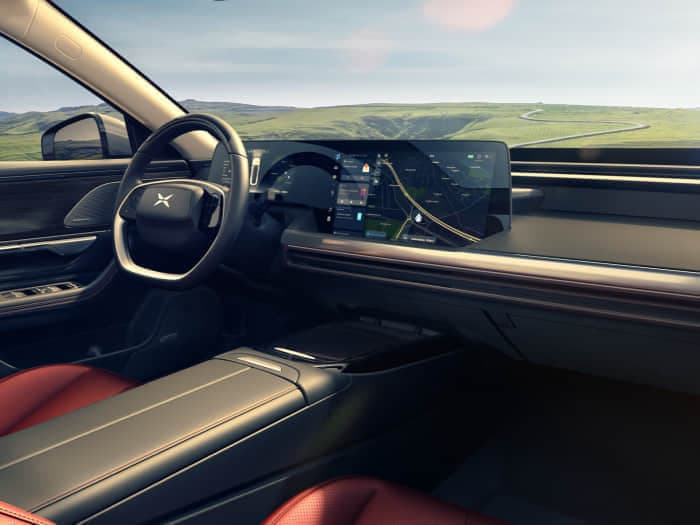
Xpeng's self-built OTA technology seamlessly provides updates straight to the vehicle, shortening the launch cycle of new tech.
4. Cybersecurity and data privacy
As vehicles generate and share vast amounts of data, consumers are becoming more conscious of digital privacy. Building trust will be paramount. Next-generation infotainment systems will adopt end-to-end encryption, multi-factor authentication and privacy-by-design frameworks to protect both vehicle systems and user data.
Automakers will need to communicate transparently about how information is collected and used — turning privacy into a brand differentiator rather than a compliance checkbox.
5. Software-defined vehicles
Infotainment sits at the heart of the software-defined vehicle revolution. Rather than hardware dictating functionality, software now defines the driving experience.
This shift allows for modularity, scalability and faster innovation cycles. Automakers can deliver new infotainment features, UI enhancements and AI upgrades through software alone which transforms vehicles from static machines into living digital ecosystems.
Star and other connected mobility innovators are helping OEMs embrace this shift by developing future-proof infotainment architectures that enable real-time updates and cross-domain integration.
6. AR, 3D and multi-screen experiences
As display technology advances, infotainment systems are evolving from flat screens into immersive, multi-layered interfaces. Augmented reality (AR) dashboards overlay navigation cues directly onto the road view, while 3D HMI enhances spatial awareness.
Multi-screen environments allow passengers to enjoy independent experiences (like streaming, gaming or remote work) all synchronized through the vehicle’s central OS.
And in the coming years, extended reality (XR) integrations will potentially redefine infotainment from a screen-based interaction into a fully immersive experience.
7. Sustainability and energy efficiency
With electrification accelerating, energy efficiency in infotainment systems is becoming critical. Low-power chips, lightweight materials and efficient cooling systems ensure that digital features don’t compromise EV range.
Moreover, sustainability is extending into UX strategy through features that encourage eco-friendly driving habits or integrate with renewable energy data systems.
8. Voice-only UX
Voice user interfaces (VUIs) allow users to interact with in-car infotainment systems directly through speech. Drivers can change music, adjust temperatures and navigate all hands-free — not only providing convenience but a safer driving experience by reducing distractions.
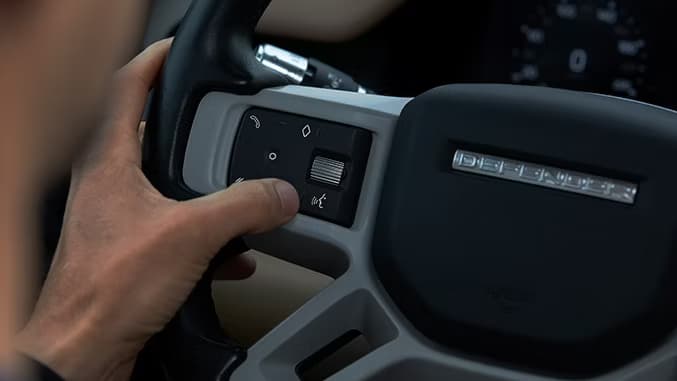
For example, Land Rover Connected Speech allows drivers to do all of the above — and more — all with their voice, removing any need to fiddle with buttons or screens while driving.
9. Head-up displays
Head-up displays (HUD) are like infotainment 2.0. These systems project information onto the windscreen, directly in the driver’s line of sight, and integrate with infotainment systems to display entertainment info, speed/mileage and navigation directions.
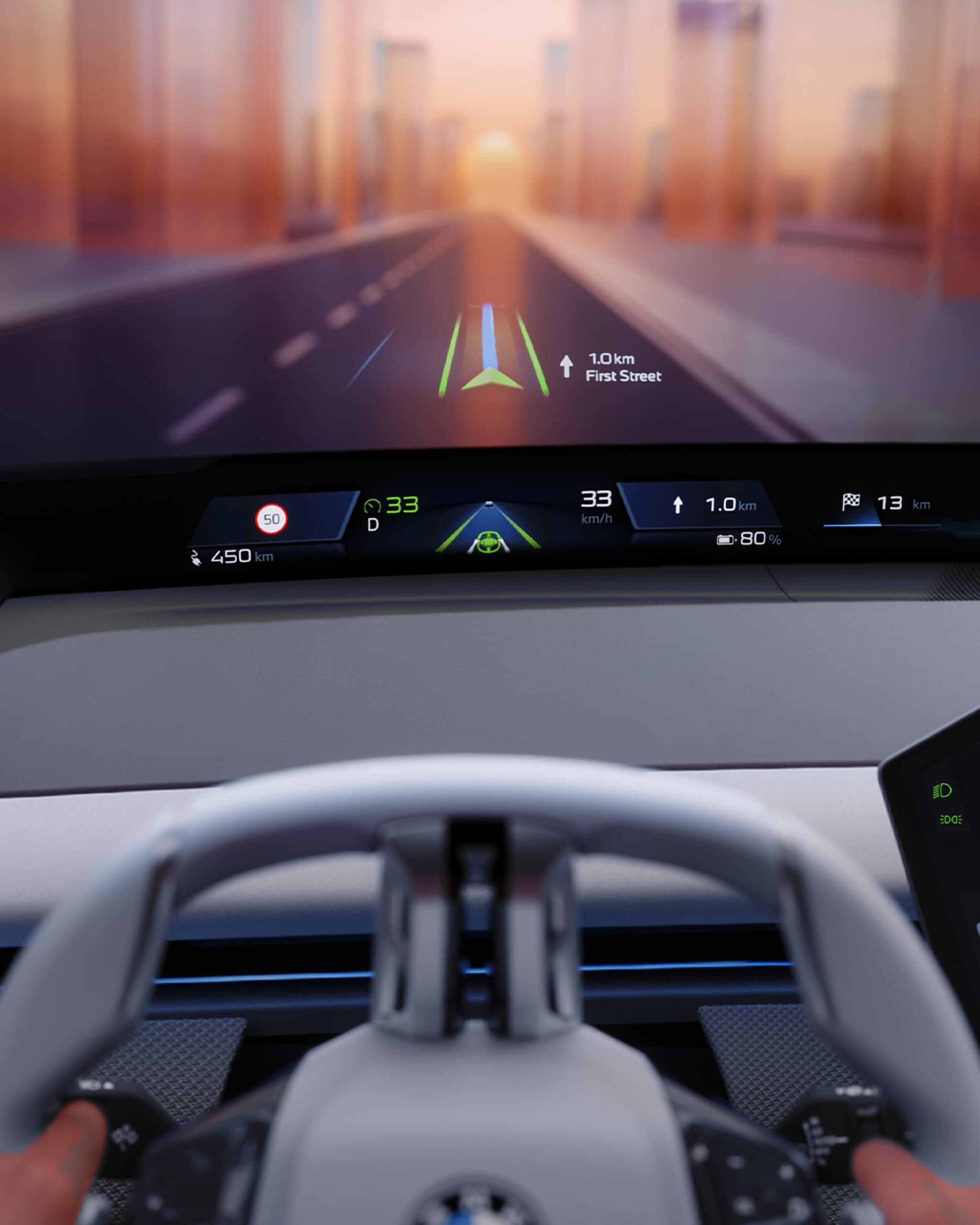
BMW's pionneering Neue Klasse Panoramic Vision places displays — like directions — and controls directly in the driver's line of sight, making them easy to use without distraction.
10. Ambient feedback
Ambient feedback uses sensory cues (flashing lights, haptic feedback, soundscapes) to interact with the driver. Components include color-matching an infotainment screen to the rest of the car’s lighting for cohesion, a steering wheel vibrating as a lane departure warning and flashing lights to warn of oncoming traffic.
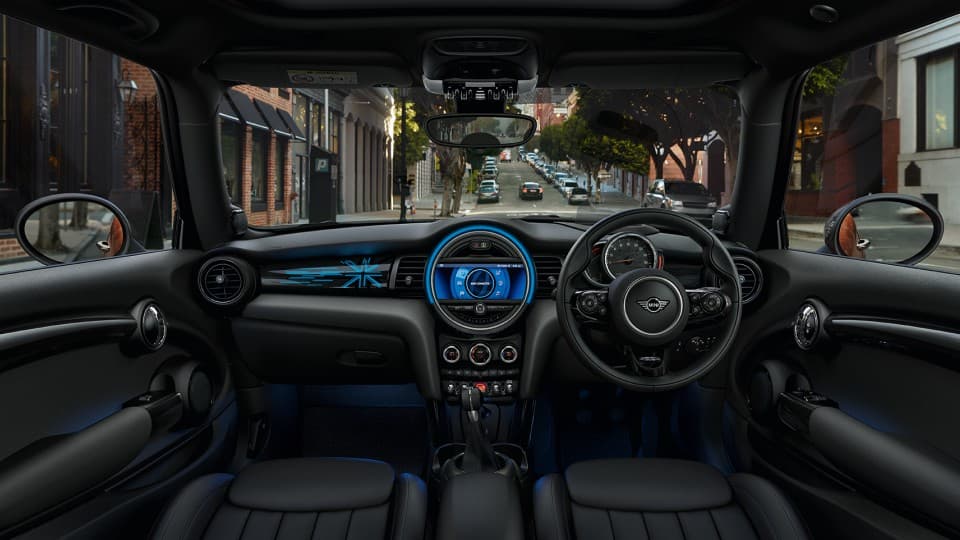
Mini use ambient feedback in the form of lighting that syncs with the infotainment panel and creates a desired ambience.
How to monetize infotainment systems
Infotainment systems are no longer a cost center for the automotive industry. Aside from making vehicles more desirable to consumers — almost half value in-car technology over brand name — these systems can provide a direct revenue stream for OEMs.
- Subscription services: Create a source of recurring revenue by charging for access to premium features like advanced navigation or driver assistance
- E-commerce & payments: An infotainment system can double as a hub for in-car payments, where users can make payments or purchase upgrades directly from the console
- Streaming partnerships: Teaming up with recognised streaming names (Amazon Prime, Netflix) can be a way to monetize streaming content within the car
- Upgrades: Offer users the chance to upgrade to premium services within the vehicle like better entertainment packages or features like heated seating
- In-car ads: Although potentially unpopular with users, ads could be displayed on the infotainment system, for example during content streams
Automotive infotainment testing
As infotainment systems become more complex, flawless performance is mission-critical. With multiple input modalities, cloud services, third-party integrations and continuous OTA updates, automotive infotainment testing demands a new level of rigor. Flawless infotainment experiences aren’t optional. They directly impact:
- Driver safety
- Brand trust and perception
- Compliance with global automotive standards
- Customer retention and post-sale satisfaction
- Software security and data privacy
Drivers expect infotainment systems that work instantly, intuitively and reliably. Even minor UI bugs or latency issues can erode confidence and harm brand loyalty. To guarantee reliability and user satisfaction, OEMs and tech partners must test across a number of areas, including:
- HMI & UX: Usability, accessibility, distraction minimisation
- Software and functionality: Core system stability and performance validation
- Connectivity: 4G/5G, Wi-Fi, Bluetooth, V2X, device pairing
- Voice & AI: NLP accuracy, multilingual support, contextual responses
- Cybersecurity: Authentication, data protection, threat resilience
Modern infotainment testing strategies require a blend of physical test labs, cloud simulation environments and driving scenarios, supplemented by automation frameworks to accelerate release cycles.
With OTA updates becoming standard, testing shouldn’t stop at production launch. Leading OEMs now treat infotainment like consumer software with continuous integration and delivery pipelines, rapid update cycles, live monitoring and remote rollback systems.
The global infotainment testing-platform market is projected to reach $3.9 billion by 2034, highlighting the growing investment in validation infrastructure and the importance placed on infotainment reliability.
Automotive infotainment examples
Major automotive brands are already redefining what the infotainment experience can be. These examples demonstrate how automotive infotainment systems are becoming central to brand differentiation and customer loyalty.
NIO NOMI. The world’s first in-car companion, NOMI is a humanized AI assistant that offers emotional interaction and adaptive personalization.
Xpeng Xmart OS: A connected ecosystem featuring an AI voice assistant, full-width cockpit display and or cross-city NGP features that enhance the infotainment experience.
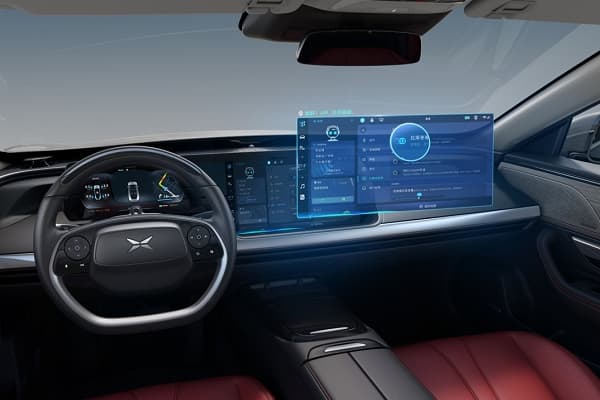
Rivian’s Infotainment Platform: Linux-based and cloud native, with a focus on community, sustainability and adventure, and integrates with streaming partners like Apple Music.
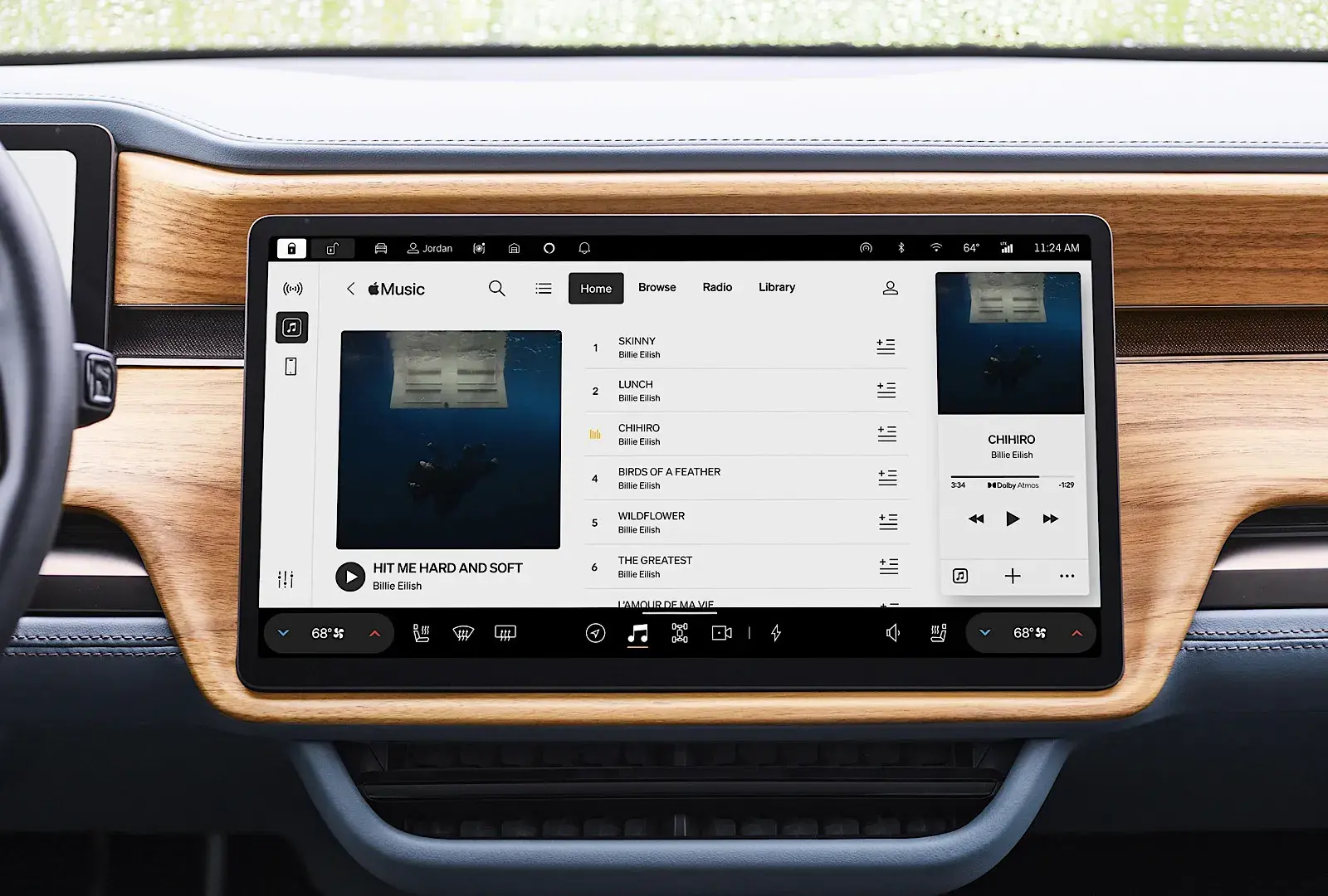
What’s next for automotive infotainment?
The future of automotive infotainment is deeply connected, intelligent and human-centric with a focus on experience as well as design. As 5G, AI and cloud computing advance, vehicles will evolve into adaptive digital ecosystems that anticipate needs, entertain passengers and enhance well-being.
For OEMs and suppliers, this shift represents both challenge and opportunity. Success will depend on mastering the intersection of technology, experience design and trust.
At Star, we're experts at spotting fresh ideas and bringing them to life. Our proven, human-centric design process enables us to bring game-changing mobility solutions to market, fast, and help clients reimagine vehicle interfaces.

